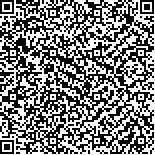下载中心
优秀审稿专家
优秀论文
相关链接
摘要

温度和发射率的常规定义均是针对均匀同温的物体, 但陆地表面通常是既不同温又不均匀, 热辐射的方向性不可忽略。在一个概念模型的基础上, 把复杂的不同温地表分解为若干均匀同温的组分, 建立宽波段热红外方向性辐射模型, 并针对一个不同温的叶子冠层进行了建模及反演的实验研究。对反演结果的统计分析表明, 此模型有较高的抗噪声能力, 当冠层顶部及底部温度的先验预测值存在 2K偏差, 观测噪声等效温差 NEΔT为 0.29K时, 顶层及底层的平均反演温度与模拟真实值的偏差分别为 0.08K和 0.24K, 反演所得结果的标准偏差分别为 0.15K及 0.48K。
Temperature and emissivity are defined for homogeneous and isothermal surfaces. However, natural land surfaces are neither homogeneous nor isothermal. The directional effects of thermal emission can not be neglected. We developed a model to describe the directional emission of vegetation canopies in thermal infrared band based on a conceptual model. The complex nonisothermal land surfaces are separated as homogeneous and isothermal components with distinct temperature in this model. A nonisothermal leaf canopy is modeled and inverted in this paper as an illustration. By statistical analysis of the inversion results, it is shown that this model is robust to noises. When a priori guesses for the component temperatures have errors of 2K and the noise equivalent temperature difference NEΔT in the observations is about 0.29K, the mean inverted temperatures have biases of 0.08K and 0.24K for the top and bottom layer respectively. The standard deviations of the inversion results are 0.15K and 0.48K respectively.

